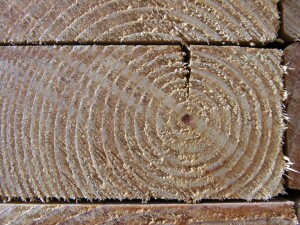Analysis: New Canadian Softwood Tariffs May Have Limited Impact
Traders have been pricing in the new duties for months. And structural issues are buttress price hikes, too.

The U.S. government’s imposition of 20% countervailing duties will anger builders and delight dealers by helping prop up current prices, but it’s unlikely to lead to any new surge in the cost of softwood because traders have factored the duties into their prices for months.
In a sense, the news from Washington represents a reversion back close to how things were in 2006 through 2012, when the Softwood Lumber Agreement (SLA) was in place and a 15% export tax on Western Canadian shipments to the U.S. was common. (See table below.)
According to a fact sheet issued April 24 by the International Trade Administration, the U.S. government will impose these countervailing duties on these Canadian businesses:
- West Fraser Mills: 24.12%
- Resolute FP Canada: 12.82%
- Tolko Marketing and Sales and Tolko Industries: 19.50%
- Canfor: 20.26%
- J.D. Irving: 3.02%
- All other companies: 19.88%
Antidumping duties are expected later this year. Expectations are widespread that, by the time all the duties are in place, Canadian lumber will have 30% tariffs.
The National Association of Home Builders (NAHB) denounced its government’s action today, saying it was “deeply disappointed in this short-sighted action by the U.S. Department of Commerce that will ultimately do nothing to resolve issues causing the U.S.-Canadian lumber trade dispute but will negatively harm American consumers and housing affordability,” Roughly one-third of the lumber used in home building comes from Canada.
Soon after, NAHB’s chief economist declared that, if a 19.88% duty remained in effect all year, America would lose $498.3 million in U.S. workers’ wages and salaries,
$350.2 million in taxes and other revenue for governments in the U.S., and 8,241 full-time U.S. jobs.

The National Lumber and Building Material Dealers Association (NLBMDA) responded to the government’s move by continuing to call for the U.S. and Canada to reach a new long-term softwood lumber agreement. It favors a new SLA that, ideally, makes everyone happy by meeting domestic demand for softwood lumber, limiting harm to American lumber producers while unnecessarily restricting the availability of products, and avoiding detrimental increases in housing prices.
But while the countervailing duties are new, the impact of the decision has been in effect for months. According to Random Lengths, prices for framing lumber stuck between $340 and $370 per 1,000 board feet for most of the past year; it was at $346 in late April 2016. Meanwhile, the one-year cooling-off period after the end of the old SLA expired last October, Donald Trump was elected, and American lumber producers put in a new request for duties.
Those factors, plus the usual late winter runup in prices, pushed the Random Length framing lumber index to $437 as of April 21–a 26.3% gain. That increase has shaken home builders. “It takes about 15,000 board feet to build a typical single-family home and the lumber price increase in the first quarter of this year has added almost $3,600 to the price of a new home.”
By contrast, dealers report the higher prices are boosting their revenues, and they believe the higher prices will stick. As we wrote in February, there are several underlying reasons why this year’s price spike won’t produce nearly as dramatic a decline this spring as we’ve seen in previous years.
First, the mountain pine beetle that ravaged British Columbia for much of this century has killed killed huge swaths of trees in the province. As a result, the amount of wood that timber companies will be allowed to cut in future years will be reduced. Meanwhile, sustainable harvest levels are near their peak in eastern Canada and the U.S. West coast. “There is plenty of fiber in the U.S. South, but the skilled labor force is not where the trees are, so labor will be a limiting factor,” Paul Jannke of Forest Economic Advisors said in February. “We won’t be able to meet new demand with the existing capacity base.”

Meanwhile, demand is rising. Metrostudy, a sister company to ProSales, predicts the number of housing starts nationally will rise 14.3% this year to total 1.36 million homes.
And at the timber mills, there’s not enough spare production capacity at the mills in operation today. According to Jannke, it takes two years from the time when a company decides to invest in a new mill until the time that mill is operational. “That means it would be 2019 before we would get any significant new capacity coming on line,” he says. A few new mills have been announced, but their combined capacity won’t be enough to meet demand if we were to see 1.5 million to 1.7 million starts—and Metrostudy is predicting 1.52 million starts just next year.

